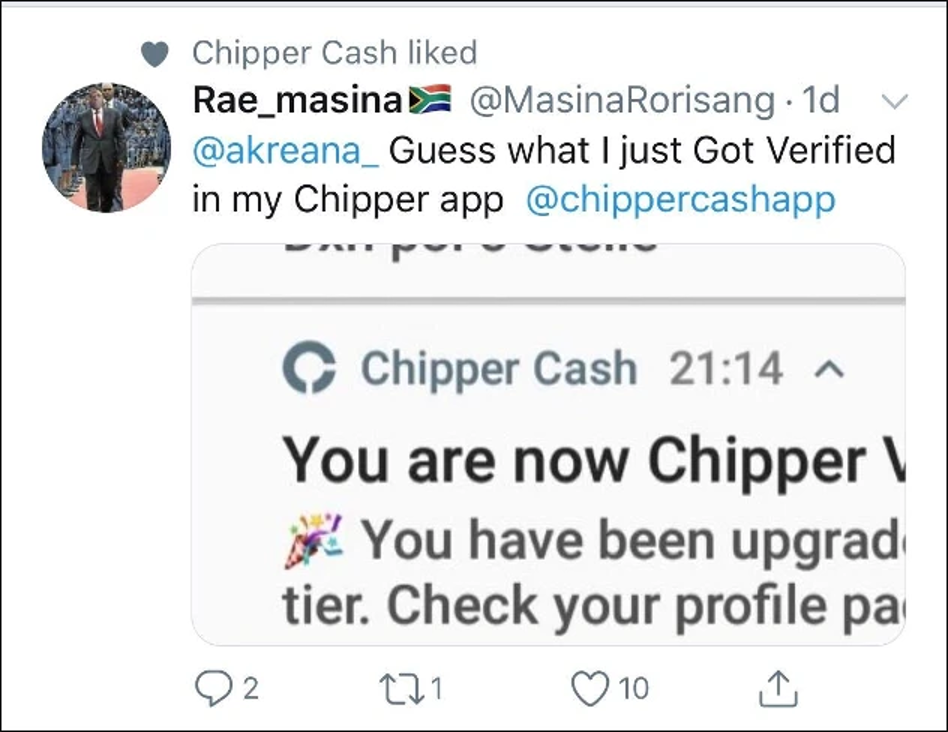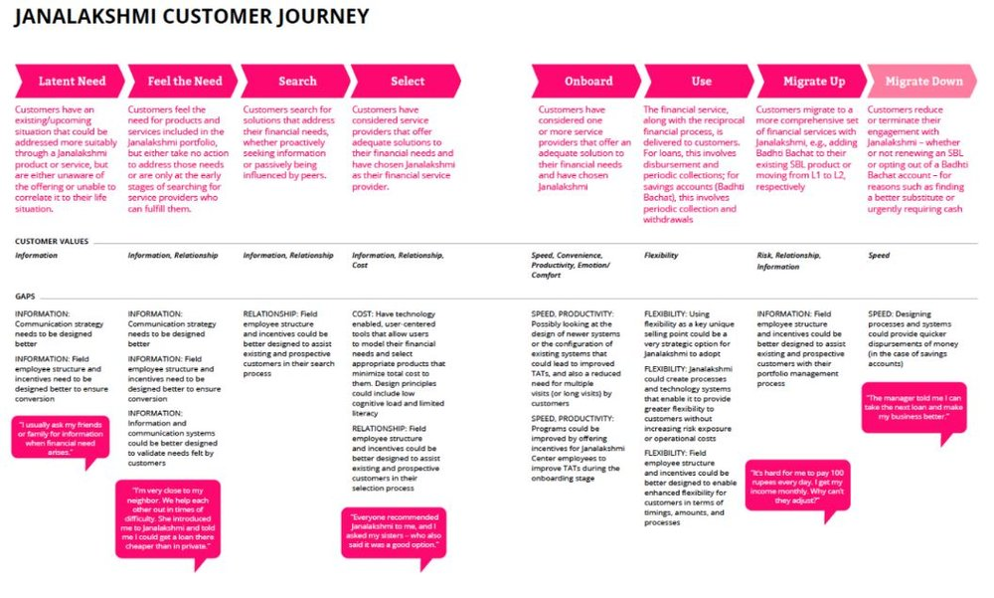
Not all of your potential customers have the same needs, thoughts and behaviors. Particular benefits of your solution may appeal more strongly to certain potential customers than to others. As well, different customers will require varying degrees of support, communication and interaction with your team in order to become active users. Similarly, once converted, not all users will bring equal value to you – some will go on to become power users, and will engage more reliably and more often, while others will interact with your product less frequently, or never become revenue-generating.
It’s important to segment customers at each stage of the customer journey so you can tailor your communications, your offering and your level of support, which will better enable you to meet customers where they are and increase engagement, and so you can continue to refine your product offering based on user behaviors.
Knowing as much as you can about your leads and customers will help you better craft your solution and zoom in on the problems you’re solving, and will also help you create a winning acquisition and engagement strategy. Segmenting leads at the acquisition stage, for instance, will enable you to run targeted campaigns based on the core product benefits that most appeal to different segments. For example, if you know that young people who are still studying are the most frequent users of your product, you can work on understanding how this group consumes information, what messages appeal to them, and how their finances are structured. Engaging customers strategically will provide a greater return on investment since you will be targeting the right customers with an appropriately tailored message at the right time.
Segmenting converted leads by their stage along the customer journey or their product preferences will enable you to send more targeted prompts, reminders and notifications to push them down the funnel and keep them engaged, and will help you understand how to adjust your product offering accordingly. As well, identifying which users are your power users and are adding the most value will enable you to understand who is benefiting most from your product and provide an opportunity for you to reward those users, request referrals and target other leads like them.
It’s important to track as many metrics about your customers as you can via a robust CRM so that your messaging and interactions with them feel as tailored as possible, based on every data point you already know about them (for instance, if they’ve already started using your product, it wouldn’t make sense to send them a prompt to try it for the first time, but they might appreciate outreach that asks them about their experience), and so that you don’t over-communicate with any particular user.
The first step to properly segment customers is to divide prospects and users into groups by observable, verifiable characteristics that reliably predict some aspect of their behavior with regards to their existing needs, behaviors and lifestyle characteristics, and by use of your product (e.g., engagement, use, revenue, interactions). Segments can also be defined by analyzing existing usage against publicly available data or data collected by your processes. For example, factors like geographic location, profession, age, or interests might be helpful to guide your engagement strategy.
Next, build an engagement plan for customers in each segment, from acquisition through the rest of their customer journey. We suggest using the AARRR framework from Dave McClure to outline your engagement strategy.
You should segment your leads early, as you are forming your marketing and go-to-market strategy, and you should segment users as soon as you have enough to divide into groups. The earlier, the better. Segmentation should guide user research, product design (i.e., building specific features for different customer segments), communications and marketing strategy, customer support processes and all important aspects of startup growth, as it keeps the team focused on particular targets and benefits, and helps them understand how to improve engagement.
Companies that fail to segment customers properly might take a “spray and pray” approach — meaning they reach out to many, very different, potential users, without ensuring messaging is relevant and targeted, and hope that large volumes of prospects will result in more conversions. In this case, results often disappoint.
Segmentation will, at first, be relatively high-level—for instance, leads for an insurtech startup might be divided among 4 groups: youth < 35 who have had insurance before, those < 35 who have not, adults > 35 who have had insurance, and those who have not. Already you can deduce certain things about each of these groups – their potential level of digital savviness, their potential dependents, their understanding of the insurance process, etc. Over time, you can add more details and more specific target segments to your plan.
For users, you might start with where they are along the journey. For example, those who have visited your website but not purchased, those who have purchased but never made a claim, those who have purchased and made a claim and those who are coming up on renewal. You will want to prompt or engage with each of these segments differently to push them further down the funnel.
For basic segmentation, it’s likely that no additional expertise is needed beyond that which already exists on your team, as you can start with Excel sheets and documents. However, if you are targeting specific segments via digital marketing, you’ll need a strong marketing person with an understanding of how to properly set up target segments using digital tools (for example, social media or Google AdWords). As you gain more users, it will also be important for you to use a proper CRM and data analytics tool, like Metabase, to understand user segments, observe changes in data, adjust your marketing and communications strategy accordingly and ensure insights reach the product team to inform development.
Some common customer features you can use to create segments include:
Each of these features tells you something about the group of people in that segment, how they behave, what their needs are, and how they might interact with your product.
That said, don’t over-complicate your segments, and make sure they’re not so specific that very few customers end up in a particular segment, or it will not make business sense to craft such specific communications and product features. Start with segments that are actionable and allow you to craft targeted campaigns and features that make sense for a sizable addressable market.
For converted users, segment also according to usage patterns. For example, you may have hyperactive, active, and dormant customers, and those that bring you more value than others (for instance, you may have a hyperactive user on the free version of your product who is not revenue-generating). Determine the core characteristics of the hyperactive, active and valuable users – these are the ones you want to target more of.
Once you have your segments, you need to define your overall objectives and key results (OKRs) for customer engagement for your target segments. These should be tied to the overarching company objectives. Be sure to assign these OKRs to members of your team with an appropriate budget and timeline. What are the main objectives and activities we should focus on to push us toward our overall goal?
When thinking about OKRs for customer engagement, it is easy to focus only on customer acquisition. But don’t forget that it’s equally – if not more – important to also consider how to ensure those customers become active users, stay engaged, and go on to refer your company to their network. Have a plan for how you will push them down the funnel from initial acquisition toward becoming brand advocates.
Use the AARRR framework to think through how to nudge users from acquisition, through activation, retention, referral and [additional] revenue. For each step in the funnel, develop a marketing and communications strategy by listing each communications touchpoint that customers would experience, as well as the main message for each segment at each step.
Consider questions like:
Particular moments – for instance, the first time a customer completes an activity, or when a customer has been active on your platform for a particular amount of time – lend themselves well to opportunities for engagement. Take these opportunities to present clear messages that will encourage customers to continue using your product and softly nudge them toward advocacy. Give your customers a reason to love your brand.
Be conscious that you are offering value to your customers in these engagements, rather than strictly pushing product use. For instance, newsletters are an easy way to present educational and informative content, celebrate power users in your community, and offer additional value, while serving as a soft reminder about your product.
Here are our pro-tips for orchestrating a winning customer journey:
Once acquired, users should be segmented according to their position in the funnel and their level of engagement with the product. For instance, those who have downloaded your app but have not yet made a transaction would receive a different set of communications from those who immediately made their first transaction. Segmenting by usage allows you to encourage users to continue interacting with the product and clarify anything they might not understand.
Communications touchpoints vary across channels, including SMS, WhatsApp, voice call and push notifications. Based on what the team knows about user behavior at each stage thus far, these touchpoints should be tested and optimized according to success rates. Pro tip: WhatsApp enables brands with business accounts to send newsletters to their groups in a way that’s easy to access and digest.
Every time a customer engages with your product, it’s a win for you. Certain milestones can also be significant to your customers – for instance, paying back their first loan, or even being approved to borrow. Build moments of encouragement and celebration into your communications strategy throughout a customer’s journey with your product, to ensure they feel appreciated and keep them coming back. See this great example from Catalyst Fund portfolio company Chipper Cash:

As you develop your team’s funnel OKRs, ensure you are set up to measure movement along each step in the funnel; for example, understanding whether an acquired customer has in fact converted into an active customer, noting which acquisition channel they came through. Otherwise you might find, for instance, that a particular acquisition channel was very effective at achieving signups, but very few of those signups converted to active users. In this case, that particular channel is not worth pursuing further, while one that achieved fewer acquisitions but at a much higher conversion rate is worth pursuing. This tracking will be crucial to effectively measuring your campaign’s success and informing future marketing strategies.
Track data points that clearly help you distinguish what is working from what is not, so you can make concrete decisions to move forward. Avoid tracking “vanity metrics”, which are data points that sound good, but don’t actually help you make decisions (for example, number of new leads in the funnel, if they are not qualified).
What metrics should you use? This will depend on your organization’s stage and capabilities. If you’re just starting out, a shortlist of simple metrics are the best place to start – i.e. one key performance indicator (KPI) per each of the categories below. As your data and analytical capabilities grow, you might expand what you’re tracking and analyzing as you continue to roll out experiments to validate core hypotheses about the product and market. Some examples include:
Only once you have your OKRs and measurement structure in place, start to determine your marketing plan and channel strategy, deciding where to allocate budget and what materials need to be created.
Before you create any materials, you need to align on core messages as well as the critical communications touchpoints in your customer’s product journey.
When you’re in a startup, you likely speak about your product all day everyday – to the team, to investors, to partners, and to customers. It is easy to get caught up in industry terminology and forget that your customers might not understand, or use the same language. The best way to catch their attention is to demonstrate that you understand them, the way they communicate, and their needs – so they can quickly relate to you.
When constructing your marketing plan for a product launch, for example, determine what the core benefit is for a particular offering, for your target segment. Then ask yourself: is this how my customer would phrase this benefit? What are the particular words they would use? That’s what should inform your messaging.
For each segment you are targeting, go through each product feature to determine which ones are most valuable to each segment (first, grouping features according to the overarching offering – for instance, business support, additional revenue opportunities, core business – and then linking each group to the segments). Also look at where within the customer journey it would be appropriate to introduce each set of features.
Next, describe the benefits of each feature specific to each segment, based on that segment’s challenges and needs, using their language as identified in the research phase.
Step back and look at what key overarching messages resonated across segments and chose a few to hero. Then create an initial keyword list which would inform website copy (and landing page copy if campaign-specific), digital campaigns and overall customer messaging. These messages and keywords can then be used to center all of your collateral.
The final step in messaging is to begin drafting marketing collateral, including:
The messaging strawman on Tab 2 of our template can guide your efforts.
The next step is to create a communications strategy for each segment’s customer journey, as illustrated below.

Customer Journey Map from Janalakshmi, India From CGAP Customer Experience Toolkit
How do you communicate with a rural customer base in which only 50 percent own phones and only 20 percent are literate?
NPS is a method to help businesses measure customer satisfaction, which tends to correlate with growth. Here, a single question is asked to customers: How likely is it that you would recommend our company/product/service to a friend or colleague? Responses are based on a 0 to 10 scale, where customers who respond with:
NPS is calculated by subtracting the percentage of customers who are Detractors from the percentage of customers who are Promoters. NPS ranges between −100 (all respondents are Detractors) and +100 (all respondents are Promoters).
The must-have score gives you an objective metric that removes emotion from the scaling decision while also giving you other important qualitative information. The key question on this survey is: How would you feel if you could no longer use [x product]?
If you find that more than 40 percent of your users would be “very disappointed” without your product, there is a great chance you can build sustainable, scalable customer acquisition growth. This 40 percent benchmark was determined by comparing results across hundreds of startups. Those that were above 40 percent are generally able to sustainably scale their businesses; those significantly below 40 percent always seem to struggle.
Leading indicator engagement data (typically at a small scale) tells you whether your users are getting meaningful value out of your product. This data reflects events or actions, not views or downloads, that are aligned with the core purpose of the product. At this stage you are no longer examining individual interactions but looking at statistical results from a large group. Metrics to consider include:
Book: Market Segmentation: How to Do It and How to Profit From It by Malcolm McDonald and Ian Dunbar is the only book that spells out a totally dispassionate, systematic process for arriving at genuine, needs-based segments that can enable organizations to escape from the dreary, miserable, downward pricing spiral which results from getting market segmentation wrong.
Rediscovering Market Segmentation – Harvard Business Review.
The psychographic profiling that passes for market segmentation these days is a mostly wasteful diversion from its original and true purpose—discovering customers whose behavior can be changed or whose needs are not being met.
Book: Segmentation and Positioning for Strategic Marketing Decisions by James H. Myers is a detailed and engaging book that delves much more deeply into segmentation than other marketing handbooks.
The Many Faces of the Poor: Mass Market Segmentation by CGAP
Six segments defined by behaviors that your team could target with tailored products and marketing messaging.
Mystery Shopping Infographic by CGAP
“Mystery shopping” is one type of behavioral research technique that can be used to determine how well things are working for everyday people and can highlight significant gaps between what is expected and what is happening on the ground.
Video: Power of Micro-segmentation by CGAP
Watch Anil Gupta, of Aircel Limited, discuss how telecom companies like his use micro-segmentation.
Segmentation: A Tool to Enhance Activity Levels by CGAP
Customer segmentation is a powerful marketing tool which can be used to understand customers, design products and tailor advertising messages. It’s based on the premise that some customers will find a service extremely valuable while others couldn’t care less about it.
Segmentation of Smallholder Households by CGAP
This paper examines the challenge of providing financial services that support the multiple goals of rural households, including those related to their more universal, general household needs and those linked to their agricultural activities.
Segmenting the “Bottom of the Pyramid” in Mexico by CGAP
Reaching the poor with a range of useful, convenient, and affordable financial services is challenging for all the reasons we know. This study will help orient assumptions about customer behavior that can lead to improved product design and less risk in business models.